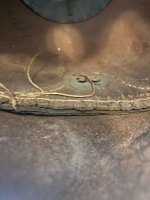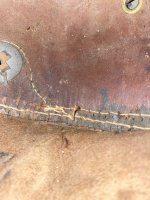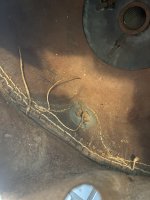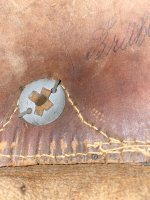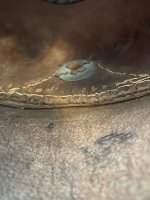I have had this helmet for sometime, but can't out what the different markings mean. It has the elements of the 1915 with gray metal and removable spike. Although it is stamped in the rear with 70R 1906. Then has a stamp and date inside that looks to be 1915 and the signature Bruhl which is a town in Germany. Could this be model 1895 that was modified in 1906 when Germany was in need of brass?
Attachments
-
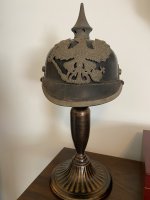 IMG_2457.jpeg1.5 MB · Views: 19
IMG_2457.jpeg1.5 MB · Views: 19 -
 IMG_2471.jpeg1.6 MB · Views: 21
IMG_2471.jpeg1.6 MB · Views: 21 -
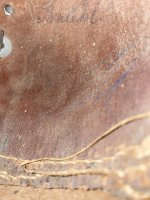 IMG_2469.jpeg1.9 MB · Views: 16
IMG_2469.jpeg1.9 MB · Views: 16 -
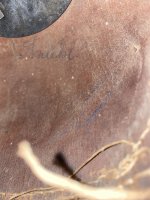 IMG_2470.jpeg1.9 MB · Views: 15
IMG_2470.jpeg1.9 MB · Views: 15 -
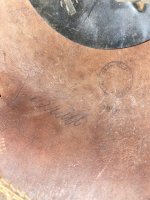 IMG_2468.jpeg2.3 MB · Views: 17
IMG_2468.jpeg2.3 MB · Views: 17 -
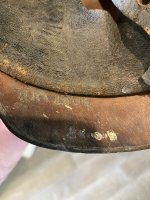 IMG_2462.jpeg2.3 MB · Views: 19
IMG_2462.jpeg2.3 MB · Views: 19 -
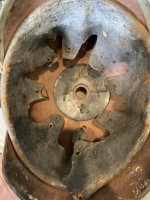 IMG_2463.jpeg2.1 MB · Views: 20
IMG_2463.jpeg2.1 MB · Views: 20 -
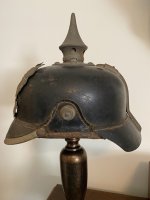 IMG_2461.jpeg1.5 MB · Views: 18
IMG_2461.jpeg1.5 MB · Views: 18 -
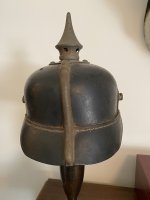 IMG_2460.jpeg1.5 MB · Views: 18
IMG_2460.jpeg1.5 MB · Views: 18 -
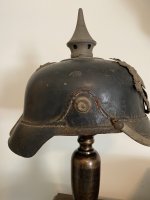 IMG_2459.jpeg1.5 MB · Views: 18
IMG_2459.jpeg1.5 MB · Views: 18 -
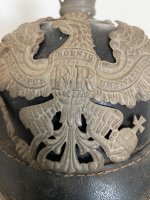 IMG_2458.jpeg1.9 MB · Views: 19
IMG_2458.jpeg1.9 MB · Views: 19

